May 31, 2025 | 21:34 GMT +7
May 31, 2025 | 21:34 GMT +7
Hotline: 0913.378.918
May 31, 2025 | 21:34 GMT +7
Hotline: 0913.378.918
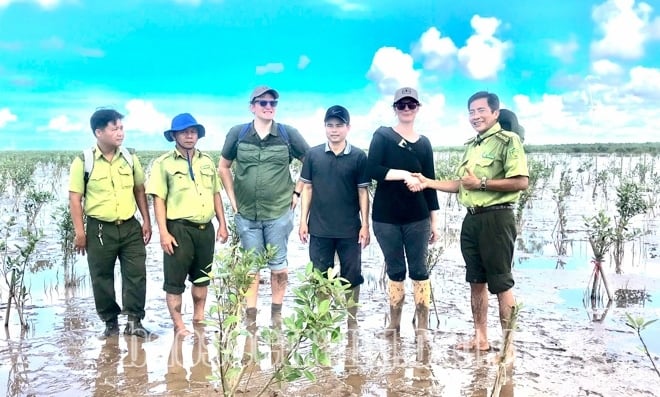
Forest rangers conduct fieldwork at a pilot site for carbon stock measurement in Vinh Chau Town, Soc Trang Province. Photo: Quynh Huong.
According to the Vietnam Administration of Forestry, as of late 2023, Vietnam boasts over 14.8 million hectares of forest, including areas that do not meet the criteria for forest coverage. Of this, natural forests account for over 10.1 million hectares, and plantation forests nearly 4 million hectares. Globally, Vietnam is seen as a country with great potential for supplying forest carbon credits.
Regions such as the Northeast, North Central, South Central, and Central Highlands hold the highest potential for exploiting this supply. For instance, the Northeast region's natural forests, covering over 2.3 million hectares, can absorb more than 21 million tons of CO2e annually. Similarly, the North Central, South Central, and Central Highlands regions collectively absorb 11 to 15 million tons of CO2e.
Despite having significant forested areas, Vietnam remains a net emitter. At COP26, the nation committed to achieving net-zero emissions by 2050, with a detailed roadmap: reducing net emissions from 280 million tons of CO2e in 2021 to 240 million tons CO2e by 2035 and maintaining this decline through 2050.
2035 is projected as Vietnam's peak emission year before emissions rapidly decline, according to Decision No. 896/2022/QD-TTg. By 2050, emissions from the energy sector must not exceed 101 million tons CO2e, and emissions from agriculture must remain below 56 million tons CO2e. The forestry and land-use sectors are expected to enhance carbon absorption to 185 million tons CO2e, more than triple the current capacity of about 60 million tons CO2e.
Vietnam's National Forestry Plan for 2021-2030, with a vision toward 2050, emphasizes maintaining the current forest area while focusing on renewable energy development and improving forest quality to increase carbon absorption.
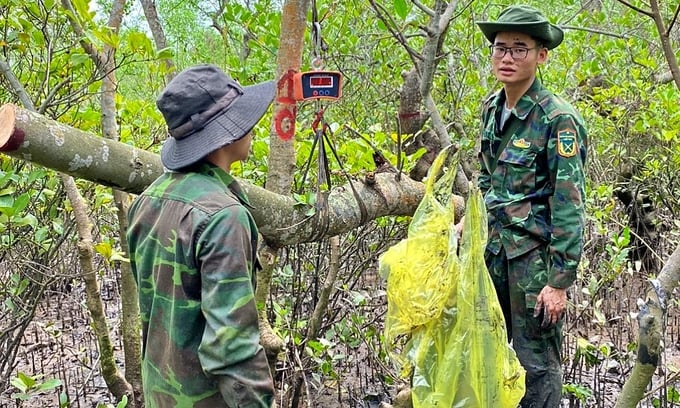
Measuring wood volume in a mangrove forest. Photo: Bao Thang.
Mr. Tran Quang Bao, Director of the Forestry Department, estimates that between 2021 and 2030, Vietnam could generate approximately 40-70 million forest carbon credits for trading. The potential revenue from this "commodity" is substantial. At a unit price of USD 5 per ton of CO2e, Vietnam holds an estimated USD 200 million, equivalent to VND 5 trillion. This figure could be even higher, depending on the capacity for carbon storage and absorption.
To date, Vietnam is among the few countries in Asia with a legal framework recognizing the role of forest carbon in climate change adaptation and mitigation, as well as setting a roadmap for forest carbon commercialization by 2028.
However, several challenges remain in commercializing forest carbon, including policy and regulatory issues and the measurement and verification of carbon absorption (or emission reductions). For certain forest carbon programs Vietnam participates in, the evaluation and issuance of carbon credits are entirely dependent on international organizations. Moreover, discrepancies still exist between international and domestic auditing and assessment processes.
In addition to increasing carbon absorption, Mr. Pham Van Dien, Rector of the Vietnam National University of Forestry, emphasizes the importance of the selling price for each carbon credit. According to the forestry professor, the global trend shows investors increasingly shifting towards blue carbon credits (carbon absorbed from marine ecosystems). This form of carbon is typically stored naturally in wetland ecosystems, most notably in mangrove forests, tidal marshes, and seagrass meadows.
Notably, the selling price of mangrove forest carbon credits is significantly higher than that of terrestrial forest credits. While terrestrial forest carbon credits are priced at USD 5-10 per credit, as of 2022, six international mangrove forest carbon credit projects were auctioned at a minimum price of USD 35 per credit.
Another critical factor highlighted by Mr. Dien is that mangrove forests store 3-5 times more carbon per unit area compared to terrestrial forests. He stated, "If we can measure and inventory the carbon absorbed by 200,000 hectares of mangrove forests nationwide, Vietnam's potential is immense."
Recognizing this potential, on October 29, the Forestry Department issued Decision No. 316, introducing a technical handbook for determining biomass and carbon stock in mangrove forests. Through a pilot project in Vinh Chau Town, Soc Trang Province, the department confirmed that the calculation methods proposed by the Institute of Forest Ecology and Environment (under the Vietnam National University of Forestry) are "scientifically grounded" and "accurate."
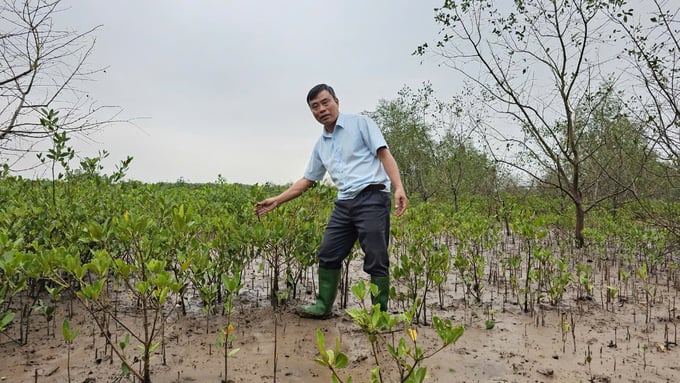
Mangrove forest in Xuan Thuy National Park. Photo: Bao Thang.
In Vietnam, mangrove forests primarily consist of 15 common tree species, including Bruguiera, Rhizophora, Avicennia, Sonneratia, Lumnitzera, Excoecaria, Aegiceras, Nypa fruticans, and others. Each forest type (natural or planted) in a specific area may be a monoculture or mixed-species forest, though the species composition tends to be relatively simple. Therefore, when dividing mangrove forests for calculation purposes, it is essential to identify dominant species or groups. Carbon stock measurements are carried out based on tree species.
The assigned personnel will define the boundaries and state of the mangrove area to be measured, calculate the carbon stock, and design sample plots for field surveys. The area is divided into relatively homogeneous zones for measurement and carbon stock calculation using maps.
According to the document, mangrove forests encompass five primary carbon pools: Living woody biomass (above-ground parts such as stems, branches, and leaves, and below-ground parts like roots), understorey vegetation and shrubs (including regenerating trees and bushes), deadwood (standing dead trees and fallen logs), litter layer (decomposed wood fragments and fallen debris), soil organic carbon.
After determining sample plots ranging from 100 to 500 m², the assigned personnel will use either random sampling or representative sampling methods to calculate results. For each carbon pool, different measurement techniques are applied. For example, when collecting data on tree biomass, the assigned personnel measure the tree circumference at 1.3 meters above ground level. For deadwood, samples must be dried before being sent to the laboratory for analysis.
By integrating forest database systems, local authorities can calculate the average carbon stock per hectare for individual forest plots or even predict future carbon sequestration based on past measurements. Once completed, the final product,a digital map, will detail carbon stock levels, supporting statistical analyses, calculations, and the determination of carbon quantities for administrative and other forest management units.
Ms. Le Thi Nu, a member of the forest protection team in Tra Set hamlet, Vinh Hai commune, Vinh Chau town, Soc Trang province, admitted that before joining the project, the concept of forest carbon was relatively abstract to her. However, after participating in five measurement sessions with experts, she has become proficient and can now guide other members of the forest protection team and the community on how to monitor forest carbon and measure the growth rate of forest trees.
Translated by Kieu Chi
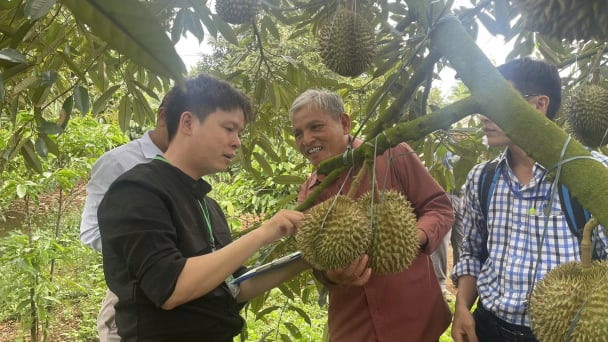
(VAN) For the durian industry to succeed, the value chain must fulfill its commitments to the government, the community, and international partners.
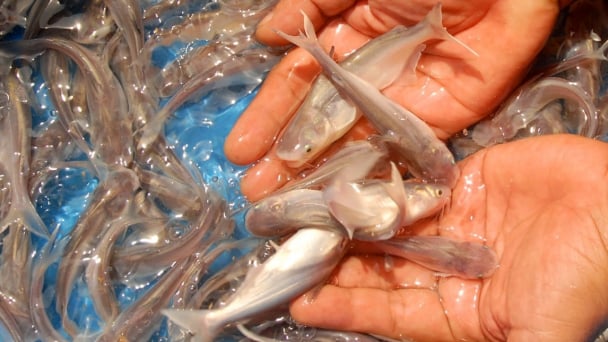
(VAN) Vaccinating juvenile pangasius helps reduce disease, antibiotic use, and farming costs, increasing profits for export-oriented farmers in An Giang.

(VAN) Due to a limited supply of workforce and competitive recruitment requirements, businesses struggle to retain talented veterinary human resources.
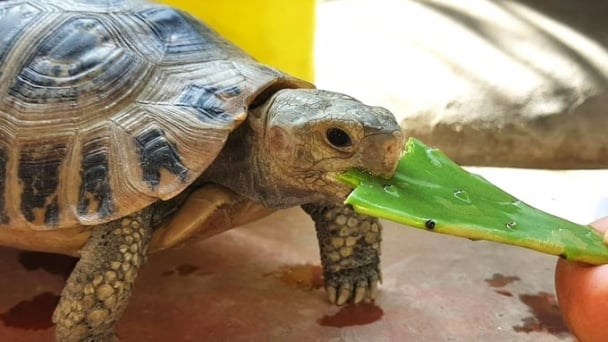
(VAN) WOAH’s guidance aims to mitigate disease risks through a One Health approach that balances economic, conservation, and public health interests.

(VAN) Ms. Nguyen Thi Dung, Deputy Director of Ngoc Hoang Cooperative, shared about the journey of bringing dragon fruit to Europe, achieving annual revenues in the billions of VND.

(VAN) Bamboo products from Thang Tho Bamboo Cooperative have reached many countries around the world, while also creating jobs for local workers.
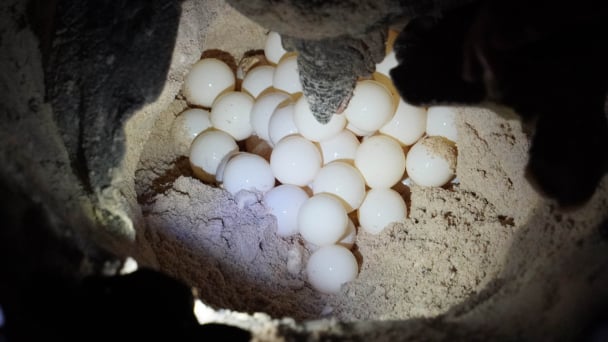
(VAN) The Management Board of Con Dao National Park reported that a green sea turtle, tagged in the Philippines, has traveled thousands of kilometers to lay 84 eggs on Bay Canh Islet.